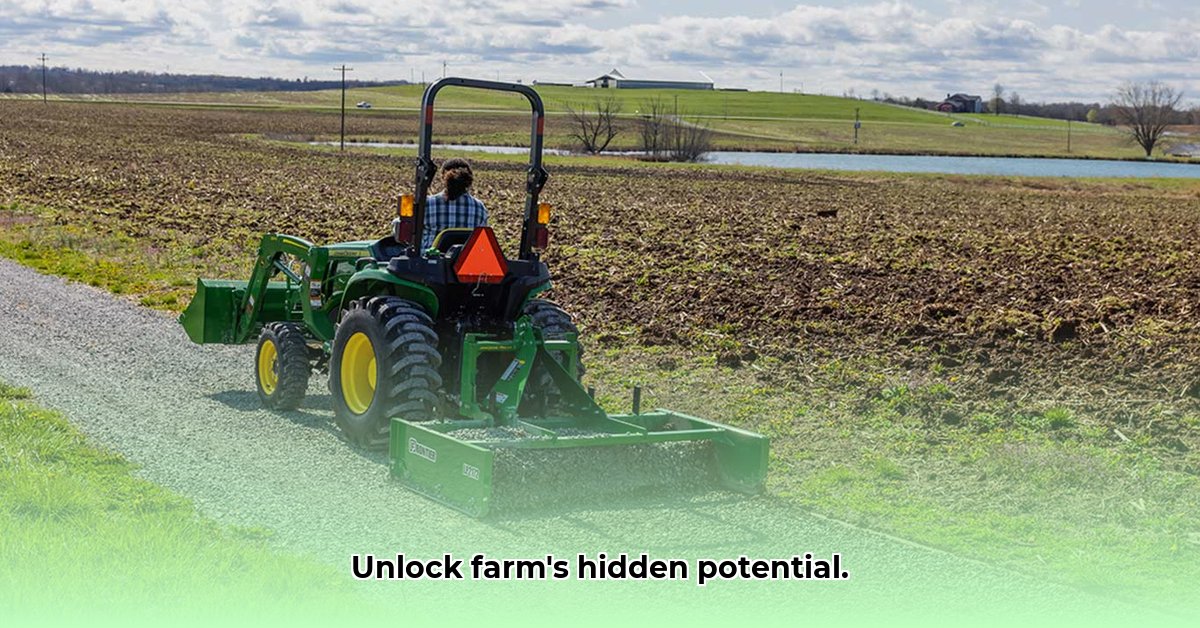
John Deere Tractor Accessories: Maximizing Your Farm's Potential
Your John Deere tractor is a powerful asset, but its true potential is unlocked through strategic accessory selection. These attachments transform your tractor into a versatile tool, boosting efficiency across diverse farming operations, from planting to harvesting. This guide provides actionable insights to help you navigate the John Deere implement ecosystem and choose the right accessories for your farm. For more information on various attachments, check out this helpful resource: John Deere Attachments.
Choosing the Right John Deere Tractor Accessories: A Step-by-Step Guide
Selecting John Deere accessories isn't just about purchasing equipment; it's a strategic investment impacting your farm's productivity and profitability. This structured approach ensures informed decisions:
Step 1: Assess Your Farm's Unique Needs
Before exploring options, thoroughly assess your farm's specific needs. What crops do you cultivate? What are the common challenges – steep slopes, rocky soil, extensive acreage? Identifying these bottlenecks guides your accessory choices. For example, a specialized planter for delicate seeds is irrelevant if you primarily grow corn. Don't invest in solutions to problems you don't have.
Step 2: Verify Compatibility: Avoid Costly Mistakes
A common pitfall is neglecting compatibility. Not all accessories work with all John Deere tractors. Consult John Deere's compatibility tools (available online) to ensure a perfect fit. Ensure your tractor's horsepower, hydraulic capacity, and three-point hitch configuration align with the accessory specifications. Ignoring compatibility leads to equipment failure, costly repairs, and operational downtime. Isn't preventing these issues worth the extra time?
Step 3: Budgeting and Prioritization
John Deere accessories vary widely in price. Prioritize essential tools directly addressing your major challenges and improving workflow. Less critical attachments can be added later as your budget expands. This strategic approach maximizes your initial investment while leaving room for future expansion. What are the most pressing needs for your farm's current operations?
Step 4: Explore the Broad John Deere Ecosystem
John Deere's vast accessory range covers nearly every farming aspect. They offer cutting-edge technologies enhancing precision, automating tasks, and increasing overall farm efficiency. Take the time to explore these options; their website and dealers are valuable resources. How will these advanced tools improve your work efficiency?
Understanding John Deere Implement Compatibility: Avoiding Common Pitfalls
Compatibility issues are frequent frustrations for farmers. While John Deere simplifies matters with systems such as Quik-Knect™ and Load-N-Go™, understanding the specifics is paramount.
Tractor Model Significance: Different John Deere tractor models have varying capacities. Horsepower, hydraulic capacity, and three-point hitch configurations determine compatible accessories. A smaller tractor may lack the power for a heavy-duty attachment.
Scrutinize Accessory Specifications: Always review weight, dimensions, and hydraulic flow requirements. Exceeding your tractor's limits is dangerous.
Utilize John Deere's Compatibility Tools: These tools match tractors with suitable accessories, saving time, money, and headaches. Don't skip this crucial step.
Boosting Farm Efficiency: Strategic Accessory Choices
Choosing accessories isn't merely about acquiring more equipment; it's about strategic investment for increased profitability.
Address Bottlenecks: Identify time-consuming or inefficient tasks. If harvesting is a significant issue, a high-capacity combine header could drastically reduce labor costs and enhance yields.
Automation for Improved Efficiency: Automating tasks (like steering and spraying) reduces labor and improves precision. While upfront costs may be high, long-term benefits are substantial. How much time could be saved through automation on your farm?
Prioritize Precision Agriculture: GPS-guided implements improve planting and spraying accuracy, optimizing resource utilization (fertilizers, pesticides). This boosts savings and yields.
Investing in Quality: Long-Term Benefits
Investing in high-quality John Deere accessories is a long-term strategy. While initial costs may be higher, benefits include:
Durability and Longevity: Quality accessories require fewer repairs and replacements.
Simplified Maintenance: Access to parts and a broad service network minimizes downtime.
Stronger Resale Value: High-quality accessories retain value better than cheaper alternatives.
The John Deere Accessory Landscape: A Balanced Perspective
The extensive John Deere ecosystem offers numerous advantages, but also presents some challenges.
| Advantages | Disadvantages |
|---|---|
| Wide selection of attachments | High initial costs for some accessories |
| User-friendly features (e.g., Quik-Knect™) | Potential compatibility issues |
| Integration with precision agriculture | Limited detailed specifications for some items |
| Excellent brand reputation and support | Ongoing research needed for long-term sustainability |
Choosing the right John Deere accessories is a strategic process. Thorough planning, research, and understanding your farm’s needs ensure a worthwhile long-term investment. While the upfront cost is significant, the return on investment justifies the choice for efficient and productive farming.